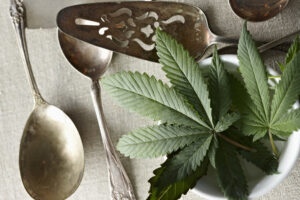The art of glassmaking is an ancient practice that dates back to the Late Bronze Age: anthropologists believe that Ancient Egyptians or Mesopotamians made the first glass vessels around 1500 BCE. On the eastern edge of the Roman Empire, the Phoenicians invented the technique of glassblowing around 500 BCE. Their new technology caught on quickly and spread rapidly across the expansive Empire, where each new culture it encountered developed glassblowing further. The Franks created glass molds and developed claw decorations, the Bohemians created innovative methods for ornamenting intricate pieces that were as much form as function. Renaissance Europe witnessed the revitalization of the glass industry in Italy, where Venetian artisans became world-famous for their beautiful, colorful Murano glass.
Although glass art techniques continued to improve and grow in variety as available technologies and chemistries improved, glass art remained an exclusive medium available only to professional artisans employed by glass factories. This was due to limitations on contemporary furnace technology, which only provided for the creation and manipulation of glass on a massive scale, with furnaces containing thousands or more pounds of glass. However, in the 1960’s, glassblowing left the world of factories and large-scale institutions and entered the studios of individual artists, thanks to the efforts of Harvey Littleton, a ceramic professor, and Dominick Labino, a chemist and engineer. These two began experimenting with furnace tech, glass recipes, and blowing techniques to create a glass mix that was meltable and workable in a small, studio size furnace, and in doing so created an entirely new art form known as studio glass. One of Littleton’s students, Dale Chihuly, went on to revolutionize the art world with his works in glass – brightly-abstract, expressive, organic installations, which can now be found in fine museums and galleries the world over.
In the 1980’s, a new force entered the cannabis glass scene, a name many stoners know well – Snodgrass. Bob Snodgrass is generally agreed upon to be the Godfather of artistic hard glass in America, and even if you don’t know his name, you have probably seen and smoked out of his (or his apprentices’) work. Bob and his family travelled across the country before settling in Oregon, and Eugene, OR is now the Mecca for artistic, borosilicate glass. Bob’s experimentation with glass and glassblowing resulted in him discovering how to add silver and gold to pieces, transforming the potentials for decoration and colored glass. Glassblowers have gone from having 12 to 15 colors to choose from to 200 to 300, and with a growing market driving demand, the forms and designs available are more fantastical than ever.
Nowadays, conventions and competitions showcase talents in the functional glassblowing community, and there are even brick-and-mortar galleries proudly displaying the work of modern functional glass artisans. In stylish New York, Mr. Grey of Grey Space Art seeks to bring the world of contemporary art and the world of cannabis counterculture together. Recognizing the artistic value of modern blown functional glass, Mr. Grey showcases artists “daring enough to be labeled as radical, subversive, and rebellious”, while also working to put them in touch with contemporary art fans and collectors. In Pipemasters Collab, a two-week glassblowing marathon, distinguished glass artists from all over the world flock to Seattle to network, collaborate, and create beautiful, one-of-a-kind pieces in front of fascinated fans.
Interested in upgrading your smoking experience to a true work of art? Visit the page of Robert Mickelsen, a glass artist whose pieces can take months to complete: mickelsenstudios.com. Snodgrass Glass is sold at a variety of quality accessory establishments, and is also available directly from his website at snodgrass.net. The website Functional Glass lists beautiful glass pieces from a staggering selection of glass artisans, organized by piece function, artist name, and more. One could truly spend hours just marveling at the intricate towers, swoops, chambers, appendages, spikes, percolators, and fantastic figures that combine to create pipes, bongs, and dab rigs beyond even the wildest imagination! functionalglassart.com
SOURCES
(1) A $30,000 Bong? Yes, It’s Art Glass For the Marijuana World
(2) What Happens When You Bring 52 Of The Best Glass Artists Together?
(3) The Resurgence of Cannabis Glass Art Will Amaze You
(4) History of glass
(5) Glassblowing
(6) Studio glass
(7) Snodgrass Family Glass
(8) Grey Space Art
DISCLAIMER: The information on this site is not intended or implied to be a substitute for professional medical advice, diagnosis or treatment. All content, including text, graphics, images and information, contained on or available through this web site is for general information purposes only. Always consult a doctor before making any health changes, especially any changes related to a specific diagnosis or condition.




